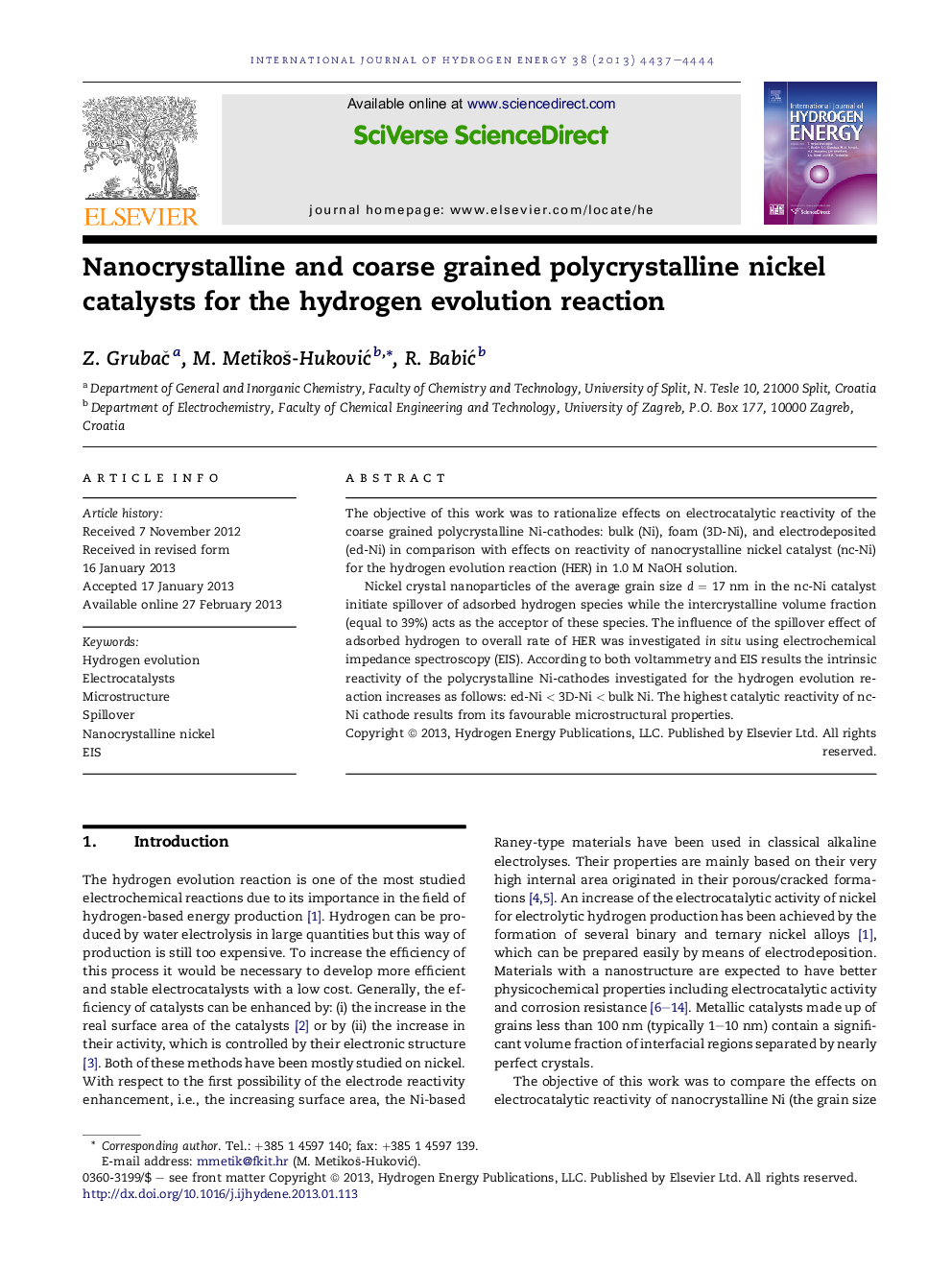| Article ID | Journal | Published Year | Pages | File Type |
|---|---|---|---|---|
| 1278137 | International Journal of Hydrogen Energy | 2013 | 8 Pages |
The objective of this work was to rationalize effects on electrocatalytic reactivity of the coarse grained polycrystalline Ni-cathodes: bulk (Ni), foam (3D-Ni), and electrodeposited (ed-Ni) in comparison with effects on reactivity of nanocrystalline nickel catalyst (nc-Ni) for the hydrogen evolution reaction (HER) in 1.0 M NaOH solution.Nickel crystal nanoparticles of the average grain size d = 17 nm in the nc-Ni catalyst initiate spillover of adsorbed hydrogen species while the intercrystalline volume fraction (equal to 39%) acts as the acceptor of these species. The influence of the spillover effect of adsorbed hydrogen to overall rate of HER was investigated in situ using electrochemical impedance spectroscopy (EIS). According to both voltammetry and EIS results the intrinsic reactivity of the polycrystalline Ni-cathodes investigated for the hydrogen evolution reaction increases as follows: ed-Ni < 3D-Ni < bulk Ni. The highest catalytic reactivity of nc-Ni cathode results from its favourable microstructural properties.
► Effects influencing reactivity of poly- and nano-crystalline Ni for the HER. ► Spillover effect in the overall rate of the HER on nc-Ni catalyst. ► Contribution of intercrystalline fraction of nc-Ni in spillover. ► Intrinsic and microstructural properties of Ni catalyst. ► EIS is a valuable method in modelling of the solid/liquid interfaces for the HER.
